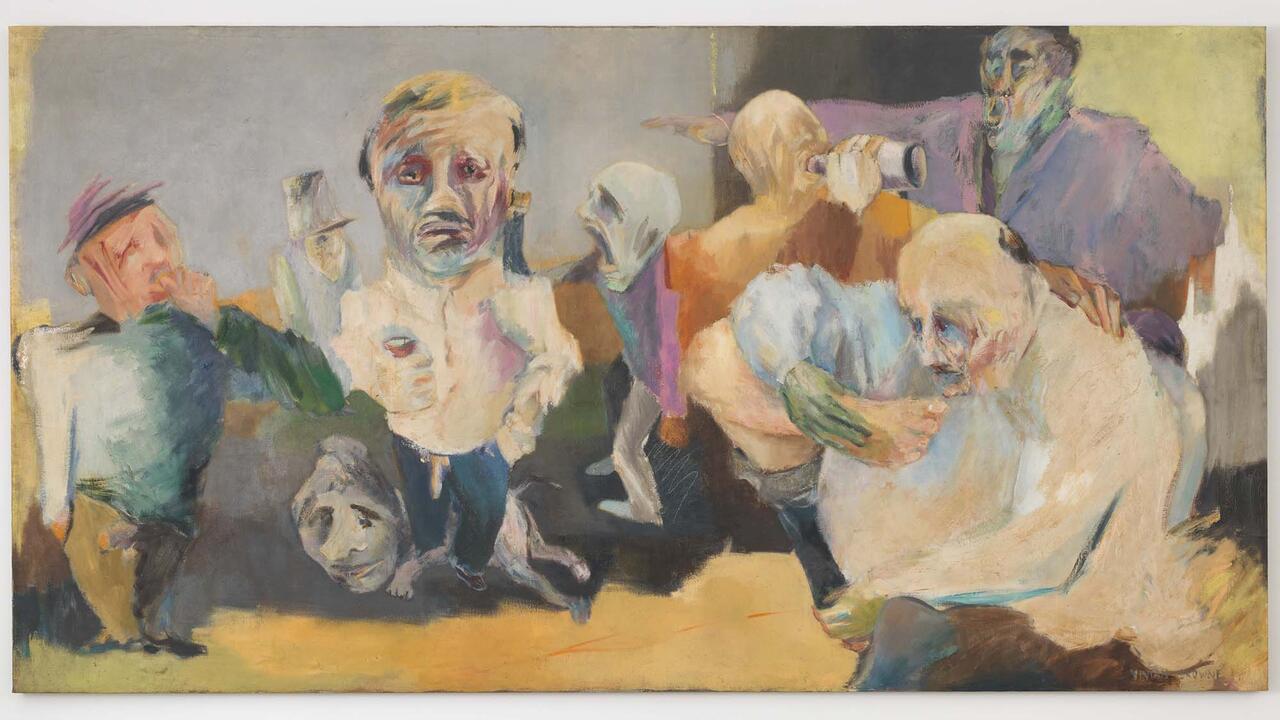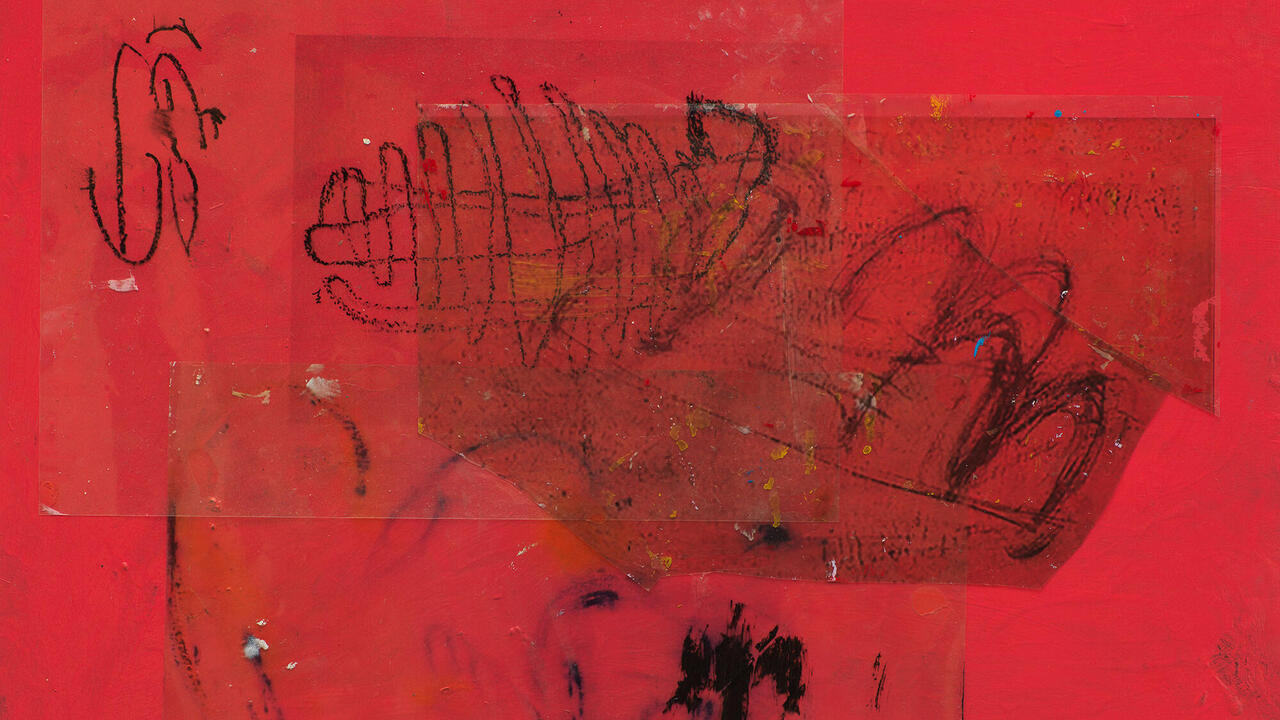Phoebe Washburn
Rubbish isn’t always a dead-end – sometimes it’s a beginning
Rubbish isn’t always a dead-end – sometimes it’s a beginning
In Steven Spielberg’s Close Encounters of the Third Kind (1977) the character played by Richard Dreyfuss builds a mountain in his living-room. His wife and kids have long since abandoned him to his obsessions, and, fixated on the various permutations of an epic preternatural form, he is determined to recreate his vision with his bare hands. He eventually incorporates every useful piece of trash and bric-à-brac that he can dig up, until he finds himself standing in his re-landscaped sitting-room, surrounded by a towering mound of refuse. He knows it’s exactly right, and he knows it is done.
The scene is one of the most singularly thrilling instances of everyday Sublime captured in American film. It was hard not to recall it when confronted by Phoebe Washburn’s Nothing’s Cutie in the Zach Feuer Gallery (LFL) in New York in 2004. Constructed from a small forest’s worth of salvaged wood, props, splintered staves and wedges, the work was less sculpture than topography, rearing up in chaotic terraced heaps and crystalline extrusions that scraped the ceiling. The raw and multicoloured timber, painted with rejected customized house paints, was drawn into a teeming megalopolis of scraps that included woodscrew boxes, snowdrifts of sawdust, spent rolls of gaffer tape and pencils salvaged from a skip. Circling this mass was like peering from the window of a banking plane onto the kind of city where most inhabitants live, work and die in shanty towns where survival is about making something from nothing, or more precisely making complex ad hoc structures out of what other people have used and thrown away. This is what Washburn does in a gallery.
Yet Washburn isn’t an architect or urbanist or a renewable resources advocate; she’s a sculptor. And while she’d be the last to romanticize the global economic forces that result in people devising architectures of rubbish, she is attracted to the processes by which discarded materials can be given a second shot. Roaming Manhattan’s streets, she likes the look of what many people might miss: dumpster dross; the way Chinatown sweatshop workers shuffle and replenish a sidewalk’s reefs and outcroppings of waste; how rubbish seemingly has its own punctilious protocols of organization.
Washburn has spent a lot of time foraging for whatever happens to fit her specific criteria. For a long while this was cardboard, and she spent the better part of a year getting familiar with the alleys and loading docks that yielded the choicest cartons. Cutting them into manageable housepaint-daubed strips, in the summer of 2002 the artist schlepped her pack rat’s hoard to the gallery and with the help of a few assistants and a lot of drywall screws began the laborious business of making Between Sweet and Low. Washburn starts out humbly: a slat of cardboard screwed into a room’s highest corner, for example, to which another is added, and then another. Washburn likens her method to rolling a giant snowball in a field, and has referred to her process as ‘dumb’, ‘stupid’, ‘goofy’ and ‘crude’. But the long hours of calculated accretion add up to something more complex than this. It’s more like launching a complicated sentence with sub-clauses and parenthetical gullies and eddies of inspired digression, without having any idea how it will all finish; but she knows the syntax will find its way.
Between Sweet and Low ended up as a gingerly calibrated typhoon of swirling detritus engulfing the gallery without, despite its weight, ever touching the floor. The work even swallowed up the 2,000 gallery announcement cards that had arrived from the printers misprinted and unusable. Wallowing here and there in inviting swales, the structure stopped just short of swamping the gallery’s reception desk. It was a perfect storm of trash. It was pointless and resisted reason and gravity, and there was nothing pretty about it.
Washburn is not just a salvager but a recycler of her own work: in 2003 the filleted cardboard from Between Sweet and Low was dismantled, packed up and transported to Rice University in Texas and refolded like cake batter into an even more ambitious four-ton work, True, False, and Slightly Better, which in turn was demolished and carted off to Grinnell College and reconfigured as a massive shingled wall of debris titled Heavy Has Debt, where the dead weight of exhausted, screw-riddled cardboard finally gave up the ghost. An acknowledgement of the messy ‘backstage’ necessity of the joists that kept Between Sweet and Low and other agglomerations of cardboard from collapsing under their own weight led to works that were all wood, all props, supports supporting nothing but their own titanic heft like Nothing’s Cutie.
Bits and pieces of wood salvaged from Nothing’s Cutie were, at the time of writing, insinuating their way into Washburn’s new work, It Makes for My Billionaire Status, taking shape at Kantor/Feuer Gallery in Los Angeles. Washburn knew that composted soil would be involved, and common weeds transplanted from New York too. Beyond that, the final form was still up in the air. Call hers the ‘butterfly effect’ method of making art. Even the most minor decisions can, in the long run, make a world of difference. And as with the decision to build a mountain in your living-room, it’s not really about the material after all. It’s about needing to do it and the process of finding out how.
















